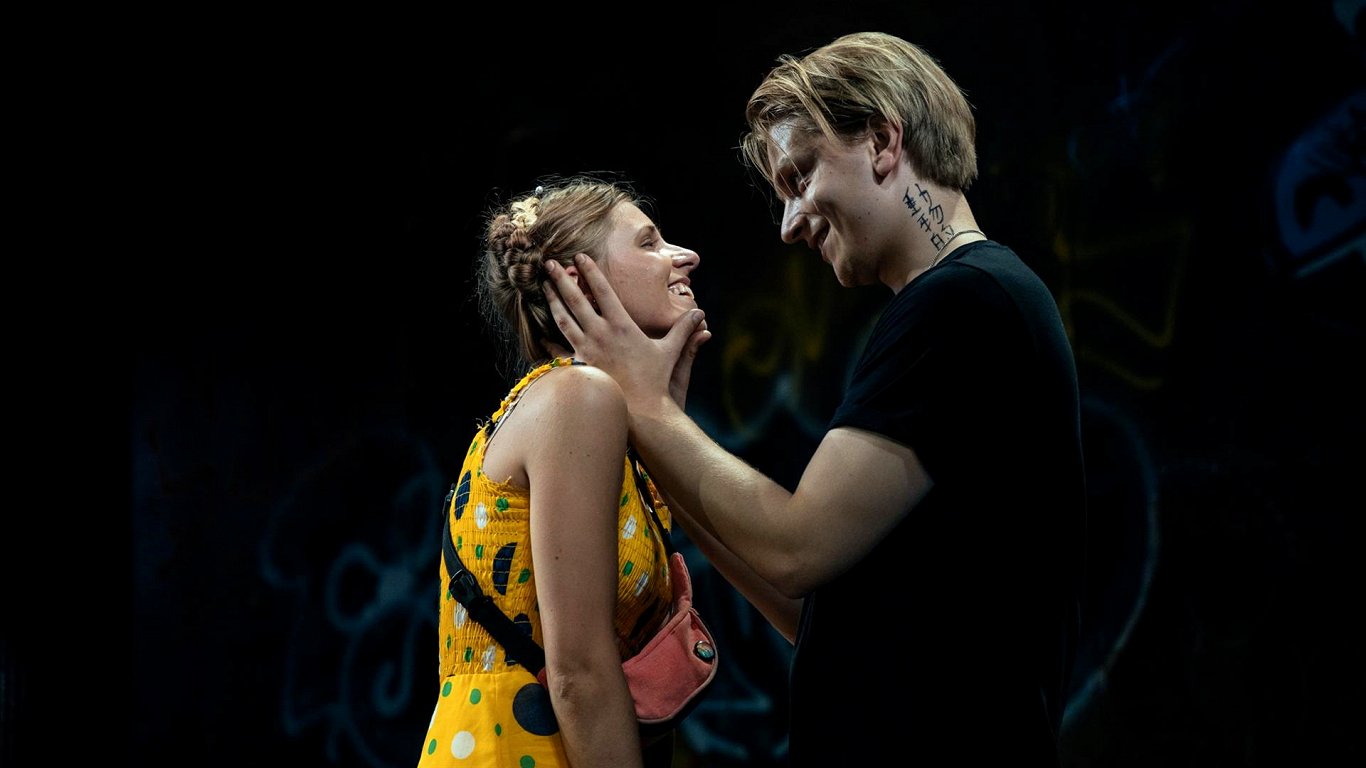After a long break, Liepāja Theater has returned to the audience with its premiere. This is a course for actors of Liepaja University diploma thesis “Diagnosis – youth”. The graduates are incredibly lucky with the director of the show Māra Ķimelis. This means that the audience is also lucky, because the show is one that pulls the audience into the abyss together with the heroes. –
At first, it was thought that Māra Ķimele would perform Ferdinand Bruckner’s “Youth Disease” last spring. However, the characters are young people, medical students, and it was decided that this play will become one of the diploma works of the actors’ course. But at that time Māra Ķimele staged Ivan Viripajev’s “Excitement”, and it was shocking…
Rehearsals of Brukner’s play began a few months ago, the name was changed to “Diagnosis – Youth”, because as the events ahead of them, one of the heroes says: when there is as aimless youth as after this war, then youth itself becomes a disease. It is about one war and the other a little later.
Ferdinand Bruckner (1891–1958, real name Teodor Tagers) wrote the play “The Disease of Youth” in 1925, but a year later premiered in Hamburg and Breslau, and the 1928 production in Berlin became a turning point.
So this is the First World War. And about the “lost generation”. It means ‘sex, drugs, rock’n’roll’, which is, of course, jazz instead of rock’n’roll, because we are talking about the ‘stormy twenties’. Although the show mostly features modern club music and the scenography is also modern.
It is meant to be either a boarding house or a dormitory. However, we see only one room in which all items periodically change places. There is a table here. Color-stained sofa that has seen better times. Euro pallets and mattresses – it’s a bed. There are also tires, metal barrels, but most importantly – a rusty metal wall, all marked with graffiti, as in some form of cooking. Or in an abandoned place behind garages. It has a door to an adjoining room, but it only opens to lock again. Heroes use a staircase leading down the door, the spectators see only the railings, a hole in the floor and a couple of upper steps. They seem to fall underground… So the whole stage is a single devastation. In addition, the devastation is in the heads of the heroes. But for them a little later.
First about the outfits. They are also modern. Nothing to say. Almost nothing. Only one of the heroines – the unhappy provincial boob Lucia – has a bright dress that literally screams that it is worn by an unhappy fool in love. The cynic and manipulator Freder, who is judged to have the pleasure of breaking people, first forces Lucy, who is in love with him, to become a thief, and then a prostitute. He will also destroy the beauty and the sage Desiré closer to the finals, although he still seems to love him. There is Mary, who adores her poet Petrel, who is haunted by a hypocrite and a liar Irene. There is also the good guy Alts – already a doctor, but in his practice there was an unclear case. The intrigue unfolds, gradually the heroes also open up, or rather, show their real face. Passions vibrate, heroes change partners, but above it all the wind like the smell of rust…
It seems that a self-destruction program has been launched for all characters from the very beginning.
The story of the play is briefly described on German Wikipedia – “Disease of youth”Vēsma Lēvalde, Doctor of Arts, who taught theater semiotics to acting students, wrote an excellent review (“Anatomy of generation feelings”), In which she analyzes in detail both the characters and how they were discovered by the young actors.
They play well, and that, of course, is the merit of Māra Ķimele. The great director and talented teacher has “squeezed” everything the young actors are capable of.
“She worked with them not just as an experienced director, but as a director pedagogue. Worked individually to discover the potential of the next actor. And it’s very noticeable, “
emphasized Vēsma Lēvalde when we discussed the production with her.
Māra Ķimele’s attitude towards the text has been very careful, nothing is abbreviated in the play. From the two endings written by Ferdinand Bruckner, she has chosen the most tragic and the harshest. Ķimele himself with the result is satisfied. Reasonably: it must be said that in the hundred years that have passed since the play was written, nothing has become obsolete, you can still watch it in one breath.
“Diagnosis – Youth” is included in the repertoire of Liepaja Theater.
A new generation of actors at the Liepāja Theater3min
—
–
Highlight text and press Ctrl+Enterto send the text to be edited!
Highlight text and press Report a bug buttons to send the text to be edited!
–
–


